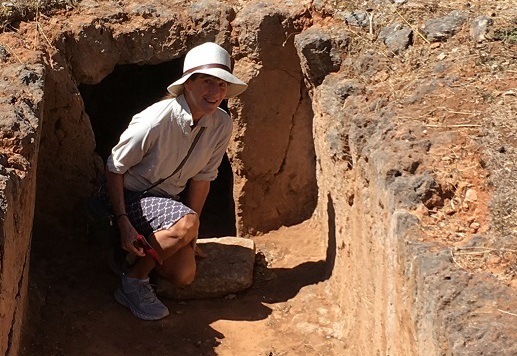
Join Thor and me as we literally delve into an ancient Minoan cemetery on Crete, while excavations continue to unearth treasures.
NOTE: Of course, Thor and I had to make another trip to Greece, as he’s fallen as much in love with the islands as I am. This time, in addition to other island-hopping, I wanted to return to Crete after 37 years. My first months-long trip was as a hippie backpacker, camping in the ruins and falling under the spell of the mysterious, vanished Minoan culture. This time, I got to introduce Thor to “glorious Kriti” and research more settings for my novel-in-progress, THE ARIADNE DISCONNECT. This new blog series started October 19, 2019, and will continue every Saturday.
Last time, we briefly explored Rethymno, an historic port town on Crete’s north coast that was originally a Minoan settlement. We said farewell to the quaint, cobbled lanes of Old Town and headed south in our rental car across the rugged, rocky landscape toward the mountains. Once more, Thor is my hero driver.
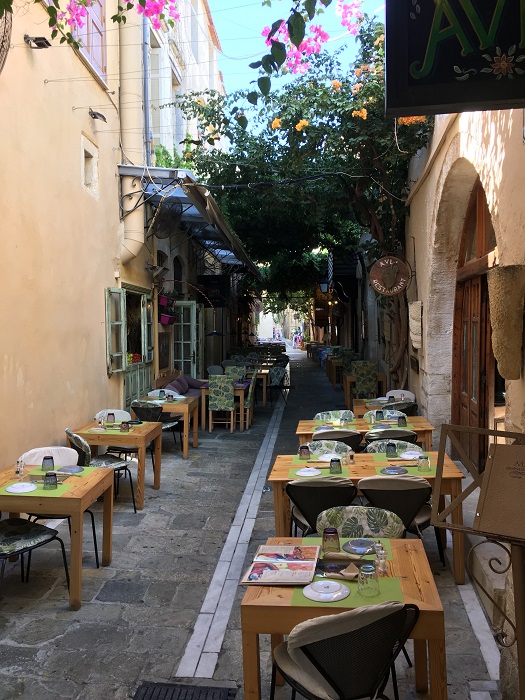
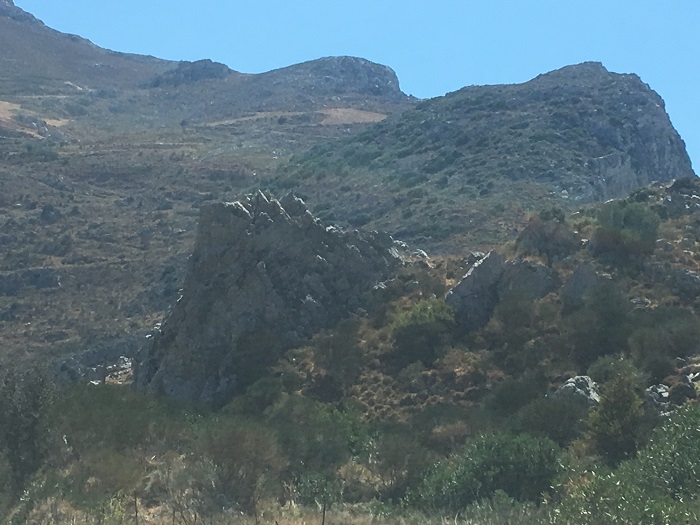
The Minoan cemetery of Armeni is only 9 kilometers south of busy Rethymno, but quiet settled around us with the midday heat as we wandered among the already-excavated tombs.
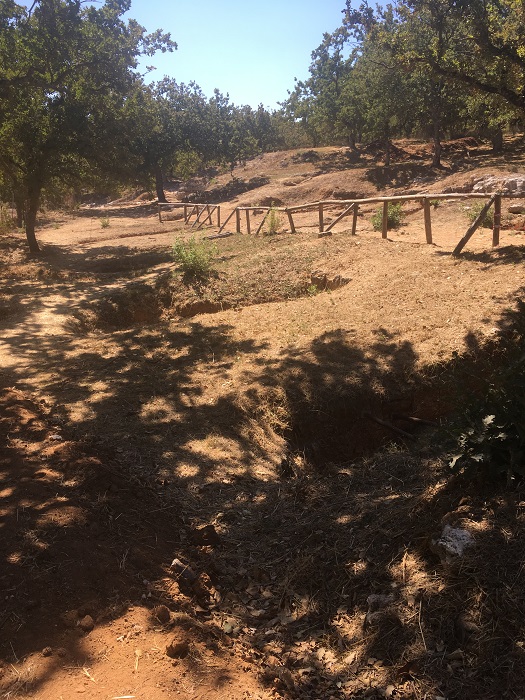
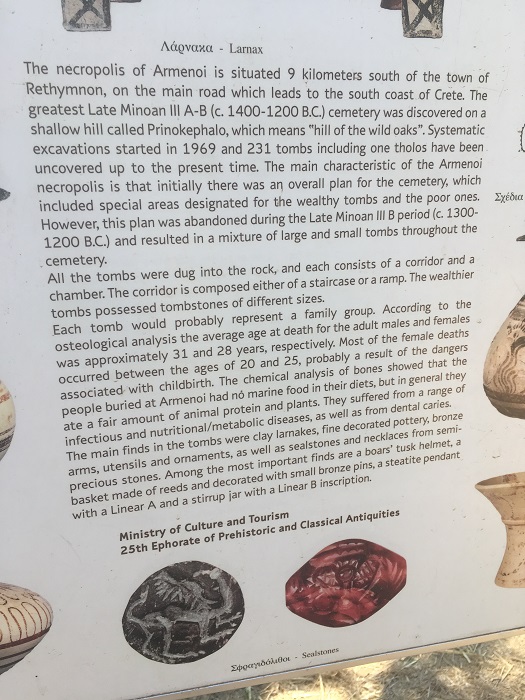
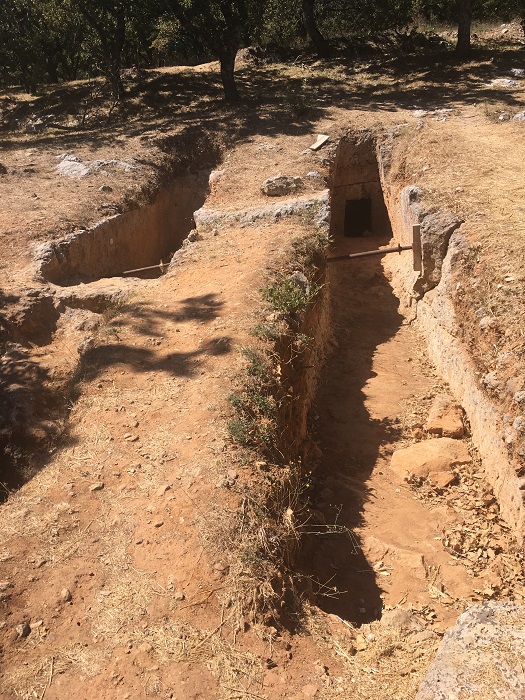
In the small but delightful Rethymno museum, we saw many of the artifacts unearthed from these tombs, including this beautiful larnax, or earthenware casket. The decorations remind me of those in ancient cave paintings that may depict shamanic or other ritual events, or simply hunting scenes. The animal on the right panel with curved horns is probably the native Cretan goat, or ibex. We weren’t allowed to photograph an even more evocative larnax, since it hadn’t yet been published.
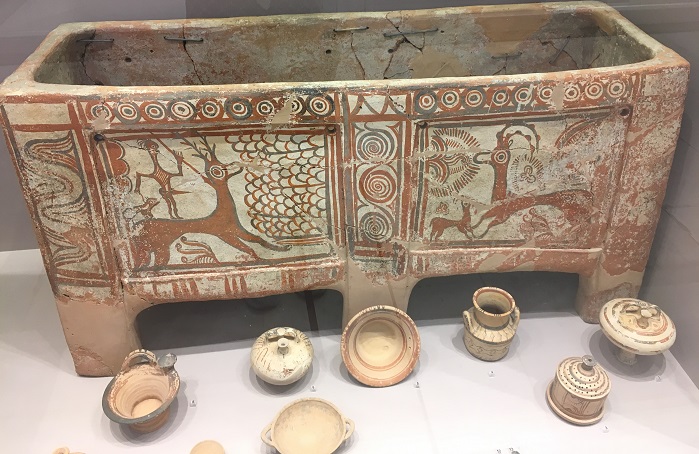
The tombs all had underground entrances with small openings, fronted by narrow, descending walls with ramps or stairs.
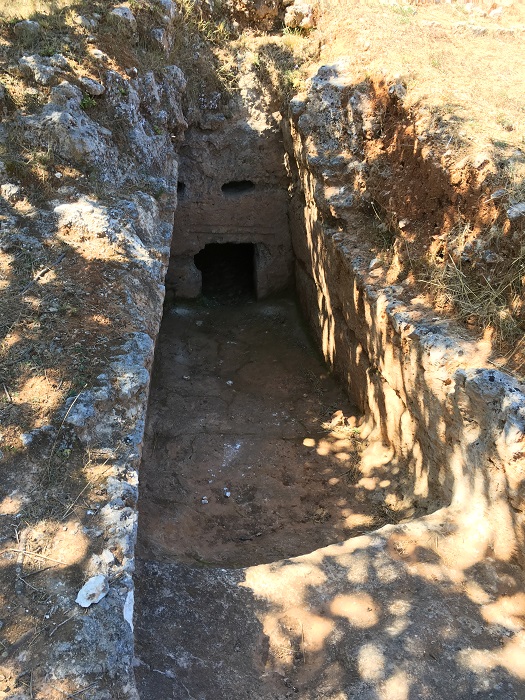
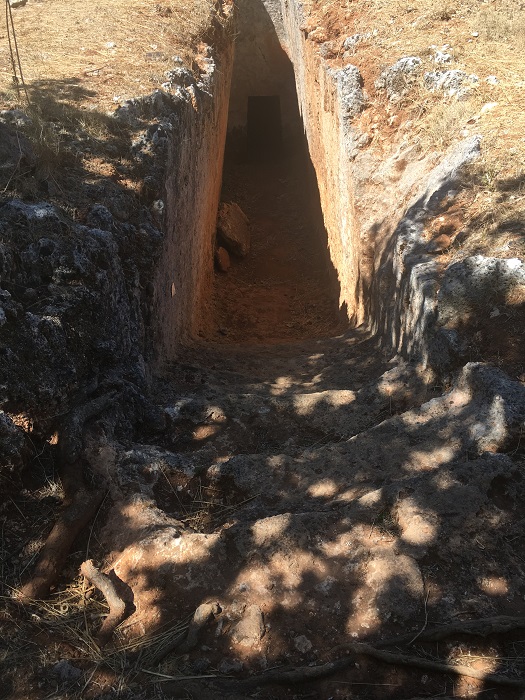
A quickie timeline of ancient Crete: Neolithic settlements started around 7000 B.C., and stone tombs have been found from 3000 B.C. Early Minoan civilization started around 2000 B.C., and though Egyptian influence in their culture seems apparent, the Cretan people migrated from Europe to this large island situated to be a major shipping hub for the region. Though the early writing has not yet been deciphered, evidence from artifacts suggests that the Minoans (or Keftiu) were not warlike, but instead focused on trade, arts, and rituals overseen by priestesses. This fragment of a fresco from the largest palace in Knossos features one of the many beautiful women celebrated in their art:
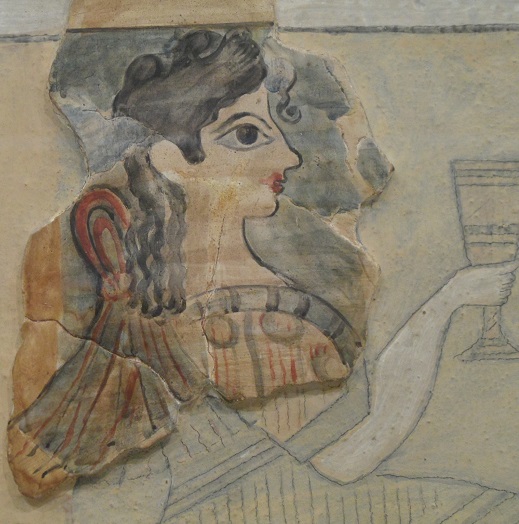
The so-called “palace culture” lasted from around 2000 to 1400 B.C., giving rise to the myth of the Minotaur and the labyrinth that may have been the mazelike palace in Knossos (more about that fascinating site in later blog posts). Earthquakes in this region of “Earth-shaker” Poseidon destroyed several palaces, bringing Minoan dominance to an end with the catastrophic eruption of nearby Thira (Santorini), earthquakes, and tsunami, dated to between 1500-1600 B.C. This event has been linked to the myth of lost Atlantis. The Minoans didn’t suddenly disappear, but as they were weakened, it gave an opening for the warlike Mycenaeans from the Greek mainland to take over from around 1400 to 1200 B.C., which is the period of this Armeni cemetery.
Early Neolithic artifacts from the area are displayed in the Rethymno museum:
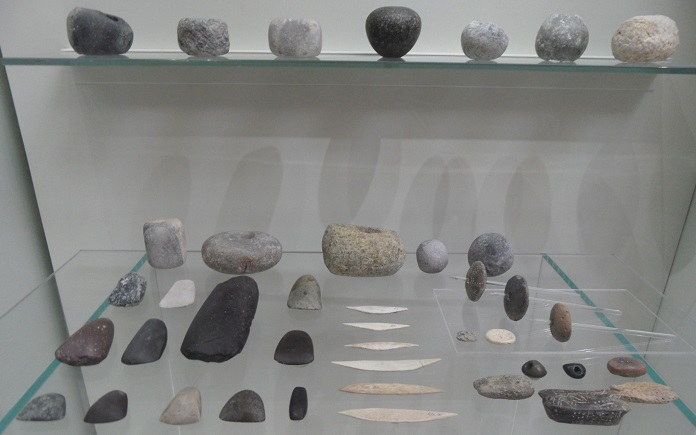
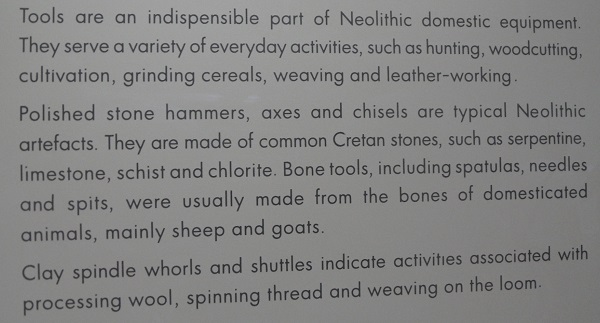
These pots are dated to 1500-1700 B.C.
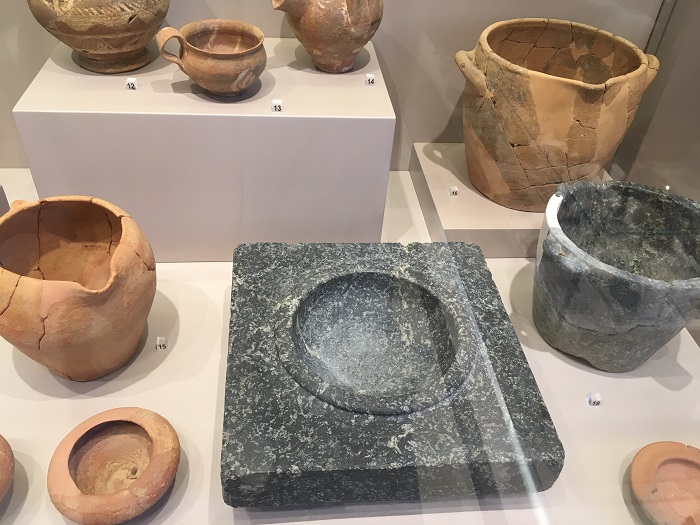
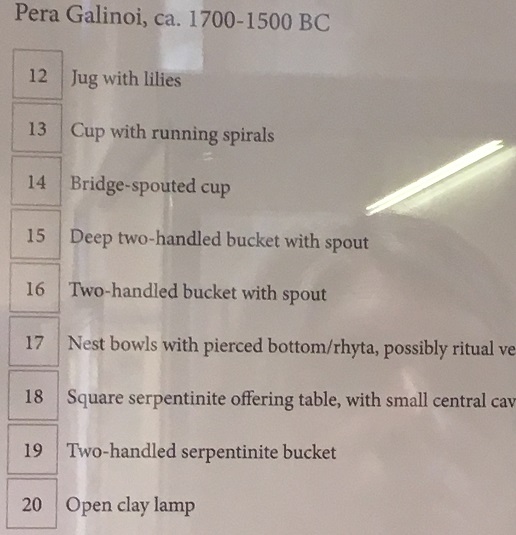
Bulls were important in rituals, and the symbology evolved into the “horns of consecration”:
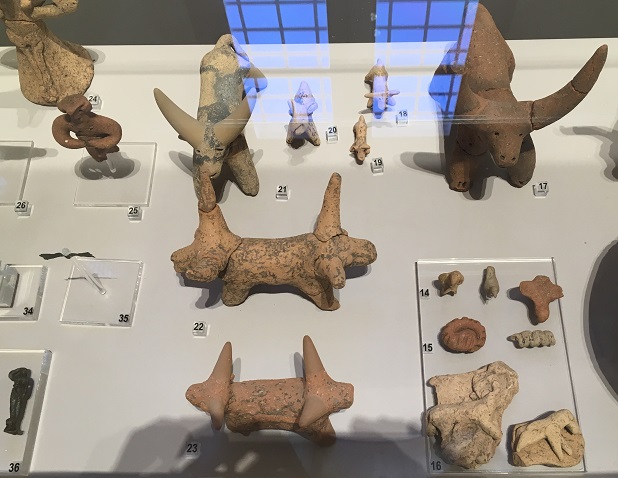
Back at the Armeni cemetery, workers were still actively excavating more tombs, and they gave us permission to enter the ones already studied.
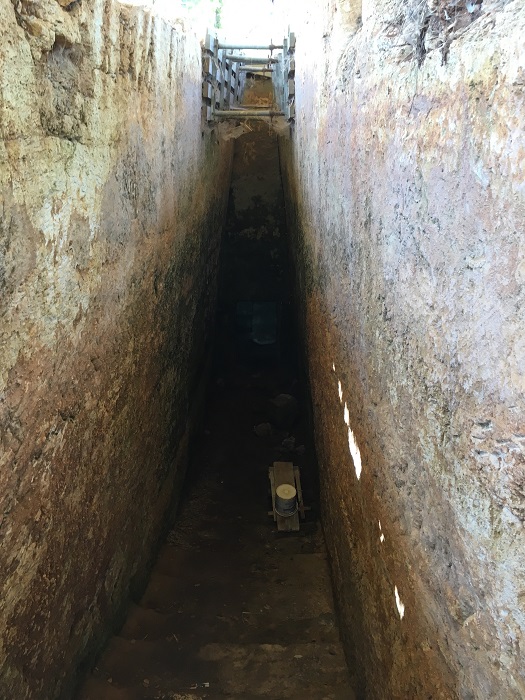
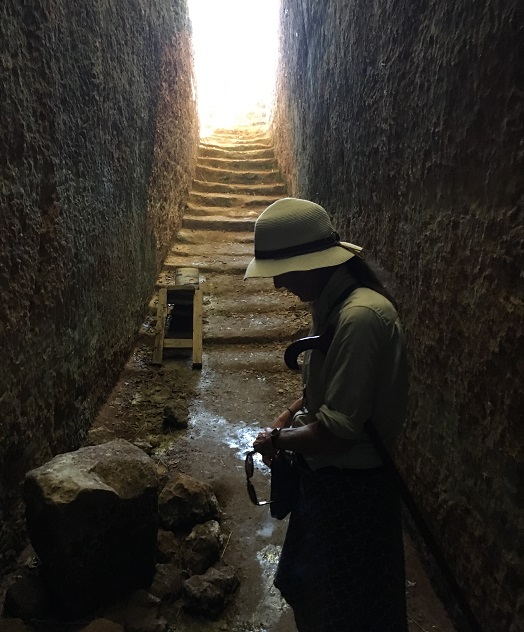
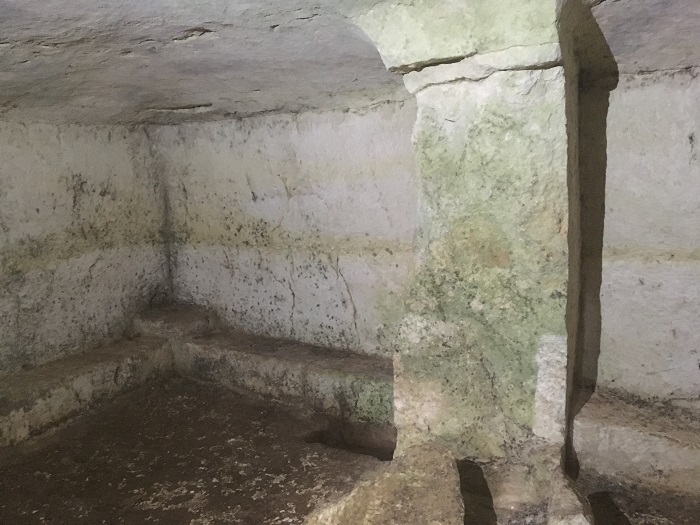
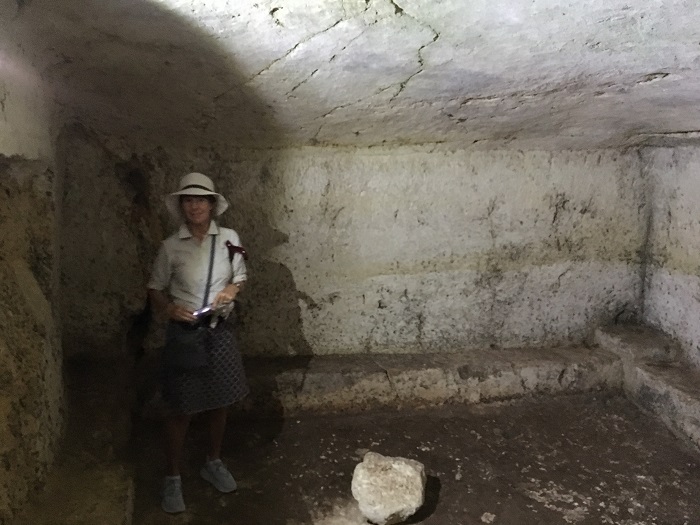
Thor and I took a few moments to reflect, in the dark and quiet of the tomb, on the people who honored their dead with their labor and treasures, which remained here over thousands of years. These priestess vessels were a type of offering found in other sites on Crete as well, their upraised arms honoring the deities:
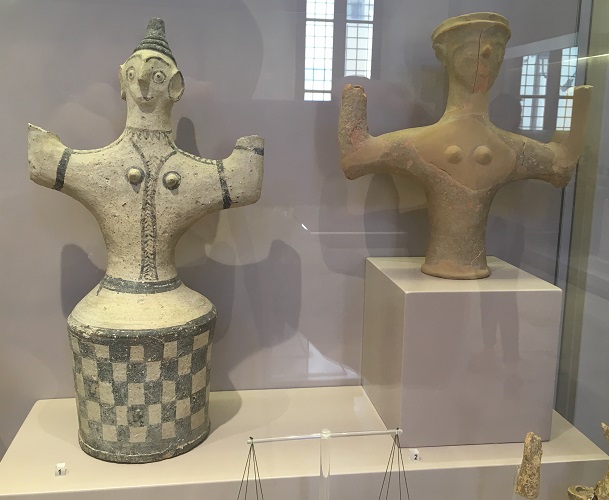
(I apologize for the glare and shadows in some of my museum photos — the layout and lighting of the displays made it difficult to get good shots.) As all over in the Greek islands, octopuses were an important image:
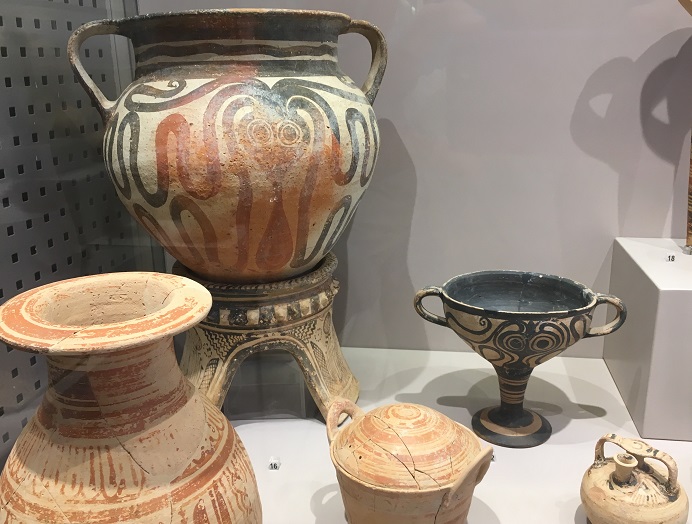
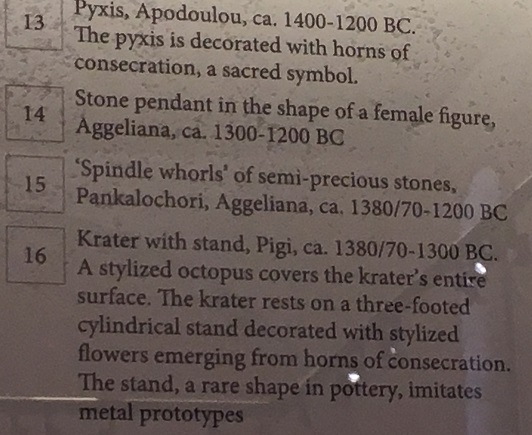
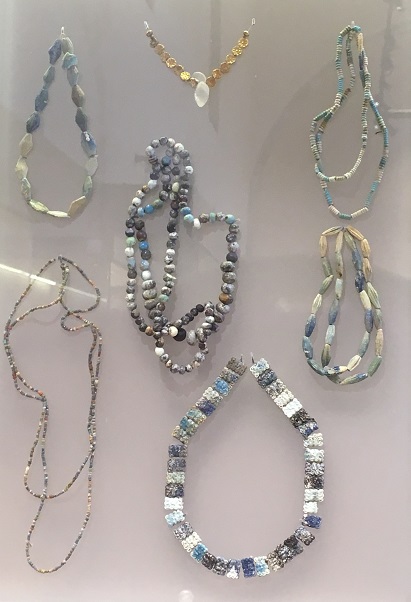
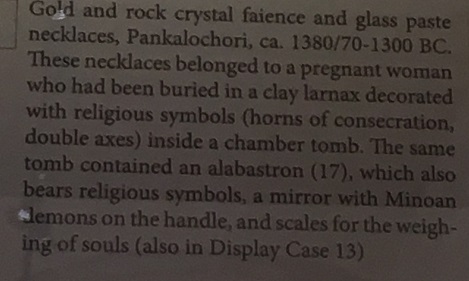
I love the small seal stones and rings that produced exquisite, miniature images:
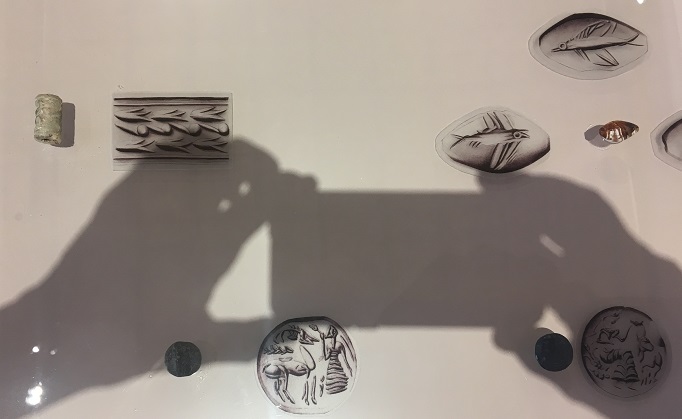
The workers onsite were still excavating:
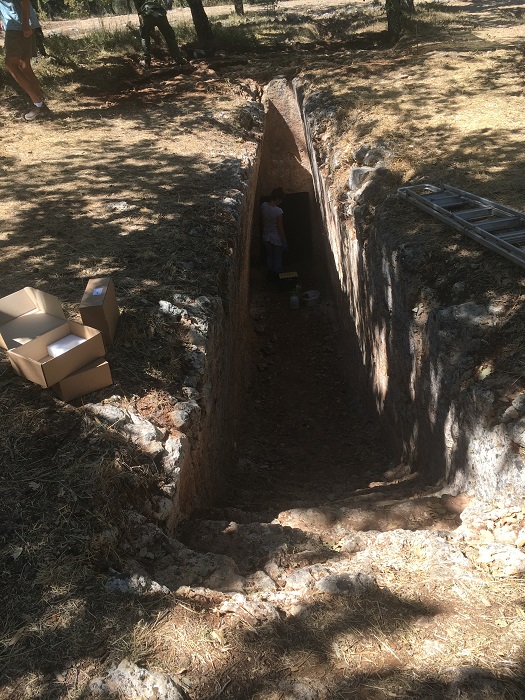
Some of them were marking out a new grid on the slope above these trenches, and as we wandered over they were taking a lunch break. When I mentioned to one of them that some of the small tomb doorways had the typical trapezoidal shape of Mycenaean gateways I had seen years before on the mainland, he confirmed my guess that these were the later tombs, dug after the arrival of the mainland Greeks. While we chatted and some of the workers rested with lunch and cigarettes, an older man in the shade of the trees was playing traditional Greek tunes on his boom-box and dancing a la “Zorba the Greek.” After all, the irrepressible Zorba was a Cretan. Why not dance to celebrate life and death?
*****
You will find The Rambling Writer’s blog posts here every Saturday. Sara’s latest novel from Book View Cafe is available in print and ebook: The Ariadne Connection. It’s a near-future thriller set in the Greek islands. “Technology triggers a deadly new plague. Can a healer find the cure?” The novel has received the Chanticleer Global Thriller Grand Prize and the Cygnus Award for Speculative Fiction. Sara has recently returned from another research trip in Greece and is back at work on the sequel, The Ariadne Disconnect. Sign up for her quarterly email newsletter at www.sarastamey.com
